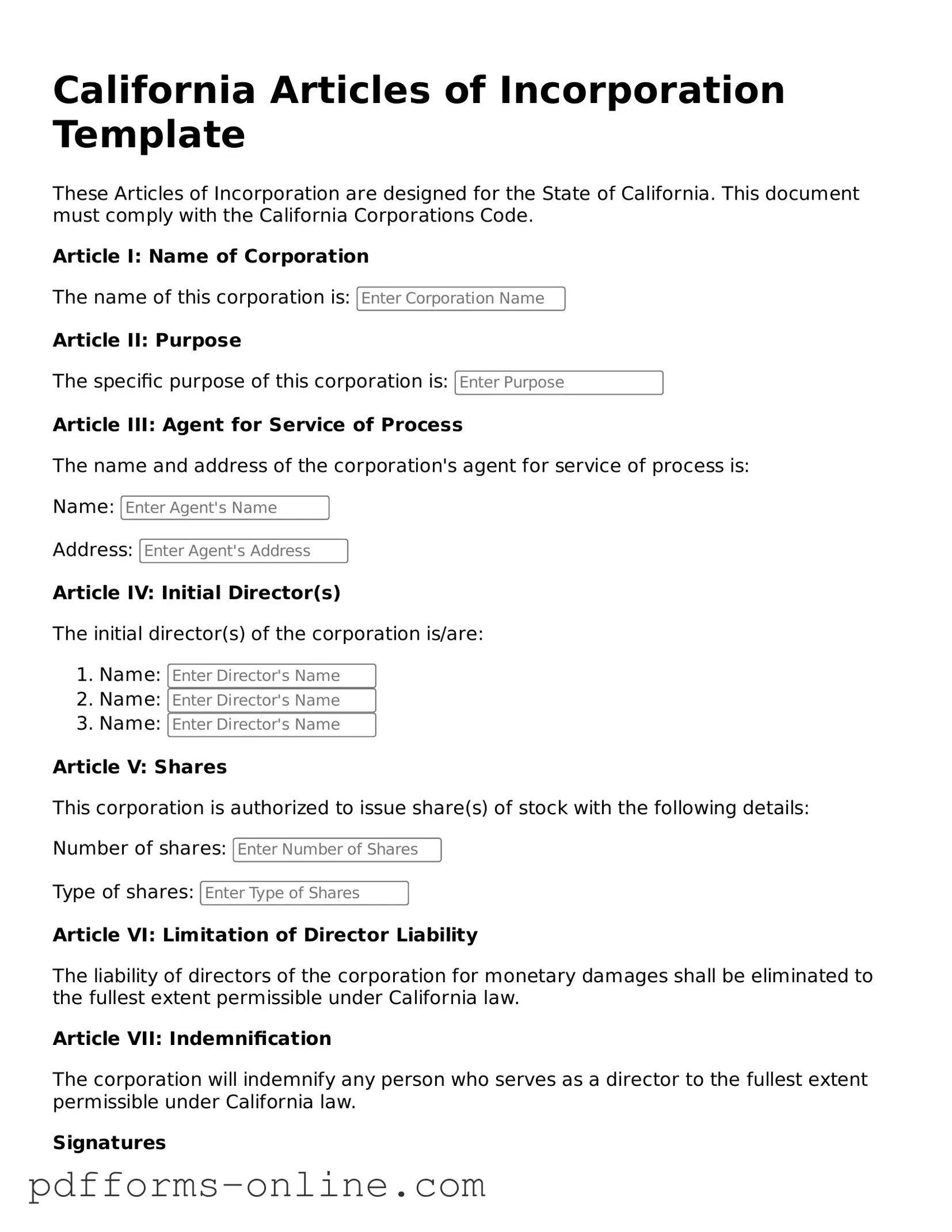Valid California Articles of Incorporation Template
The California Articles of Incorporation form is a legal document required to establish a corporation in the state of California. This form outlines essential details about the corporation, including its name, purpose, and management structure. To get started on forming your corporation, fill out the Articles of Incorporation by clicking the button below.
Open This Articles of Incorporation Online
